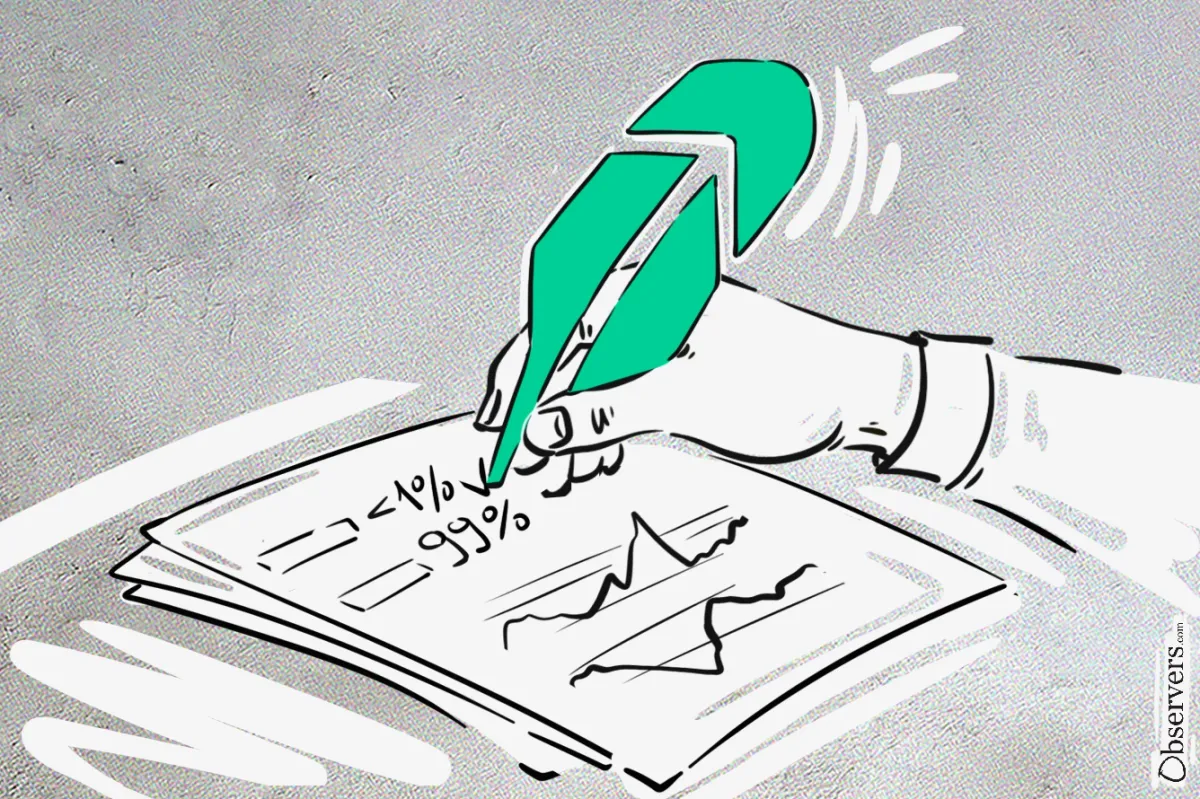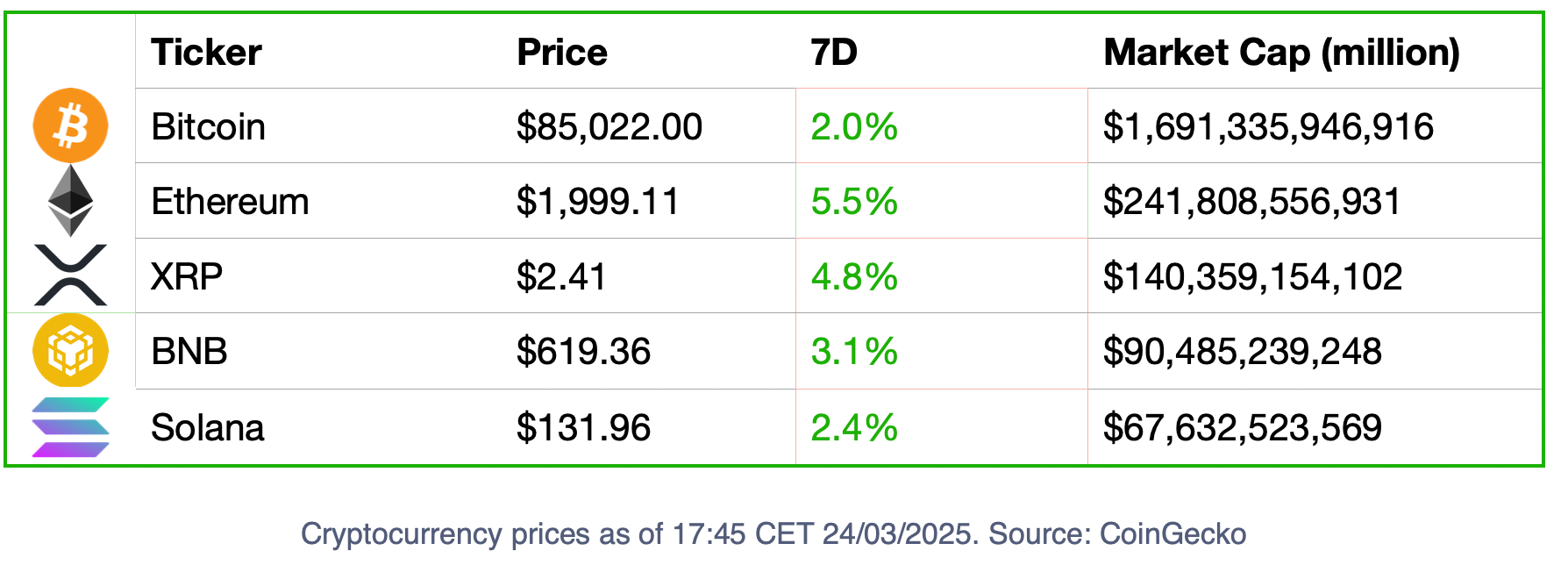
Happy Monday, Observers!
Last week, tensions continued to rise over cryptocurrencies on the international political stage.
Bank of France Governor François Villeroy has cautioned that Trump’s embrace of crypto might be “sowing the seeds” of a crisis.
Meanwhile, fear of how dollar-pegged stablecoins could destabilize their economies, both the European Union and China are doubling their efforts to set their own CBDC projects in motion.
 Experts in Web3 and Digital AssetsRebecca Denton
Experts in Web3 and Digital AssetsRebecca Denton
Geopolitical instability and conflicts have terrible consequences for most people, but some always stand to profit from them, and blockchain-based prediction markets are now one of them.
Polymarket has been on fire with all sorts of bets about how current events will unfold. The potential gains of this new business have prompted the online stock and crypto trading platform Robinhood to enter into a partnership with Kalshi to launch a prediction market hub.
 Experts in Web3 and Digital AssetsRebecca Denton
Experts in Web3 and Digital AssetsRebecca Denton
While Kalshi, unlike Polymarket, is regulated in the United States, it doesn’t use blockchain technology or is decentralized, which, given the appetite of prediction market users for going over the line with extra-sensitive subjects, might not play in its favor.
🔥 Highlights Of The Week
- Tether becomes one of the largest buyers of U.S. treasuries, purchasing over $33B in 2024;
- OFAC removes Tornado Cash contract addresses from its sanctions list;
- USAID memo reveals plans to leverage blockchain for aid distribution.
📈 Crypto Markets

🍭 Crypto Highs And Fun Times
- EOS, the company that made headlines in 2018 for having the largest ICO ever, has rebranded to Vaulta as part of a project to establish a dominant position in Web3 banking.
😈 Crypto Naught And Sloppy
- Embarrassingly for the whole crypto sector, North Korea has become the third largest government Bitcoin owner following February’s $1.4 billion Bybit hack. The crypto exchange is currently working on decoding transactions of crypto-mixers to understand how the Lazarus group performed the attack and where it is keeping the funds.
Project Of The Week: Optimex
 Experts in Web3 and Digital AssetsAlexander Mardar
Experts in Web3 and Digital AssetsAlexander Mardar
Launched this week, Optimex is a new decentralized protocol that aims to enable DeFi on Bitcoin.
Vietnamese blockchain entrepreneur Loi Luu, the founder of the decentralized liquidity protocol Kyber Network, has developed the protocol.
Rather than relying on bridges and wrapped versions of BTC, Optimex will allow users to engage directly with the blockchain to activities such as swap, lending and borrowing, and margin trading.
Stablecoins: The Ultimate Blockchain Use Case
Over the last year, the stablecoin supply increased by 63%, monthly transfer volume more than doubled, and the number of active addresses increased from 19.6 million in February 2024 to 30 million in February 2025.
Tether and Circle continue to dominate the market, but the former has lost some market share to the latter: USDT supply grew from $96 billion to $146 billion but lost 5% of the market share, from 69% last year to 64% now. The second largest stablecoin in the market, USDC, not only doubled its supply, from $28.5 billion to $56 billion, but gained 4% of the market.
For these and more insights into the stablecoin market, read the Observers report:
 Experts in Web3 and Digital AssetsAlexander Mardar
Experts in Web3 and Digital AssetsAlexander Mardar
Not So Dead Memecoins
At first glance, the meme coin cycle seems to be over, but a closer look shows that there is still much happening.
BNB chain is now becoming a hub for memecoin trading.
With the endorsement of Binance founder CZ the platform is now breaking trading records - on March 16, it recorded a recording trading volume of $1.64 billion.
On Solana, activity has died down significantly.
This, however, hasn’t stopped memecoin projects on the network to try to garner users’ attention - Pump Dot Fun launched its own exchange this week.
 Experts in Web3 and Digital AssetsRebecca Denton
Experts in Web3 and Digital AssetsRebecca Denton

